Closed terrariums are having a serious moment online, and for good reason. These self-sustaining little ecosystems are gorgeous to look at and can bring a sense of magic and tranquility into any room. Picture a glass jar filled with lush green foliage, tiny ferns, and maybe even a miniature mushroom or fairy figurine. It’s like a forest in a jar—and you barely have to lift a finger to keep it alive.

The trick to a thriving closed terrarium is choosing the right plants. Unlike succulents, which prefer dry, open containers, closed terrariums need plants that love humidity and lower light. Think of it like designing a tropical mini-jungle or woodland fairy glade. Here are 11 of the best plants (and most popular in 2025) for creating your own little indoor paradise.
1. Nerve Plant (Fittonia)
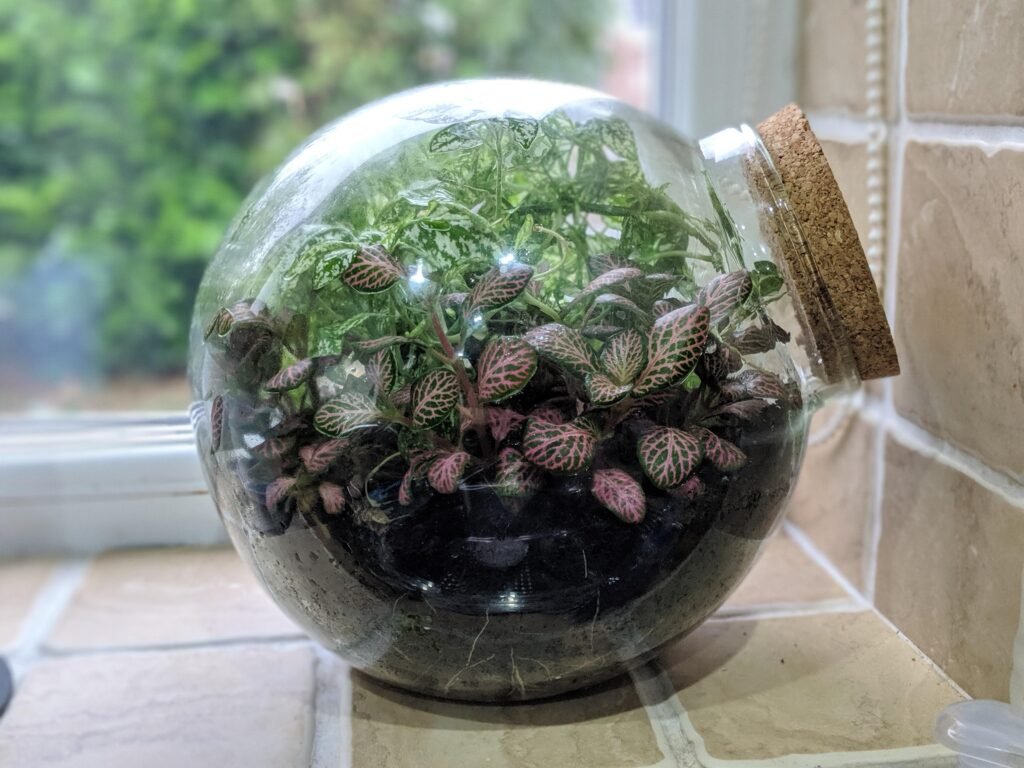
Fittonia, or Nerve Plant, is one of the first plants I ever used in a terrarium, and it’s still one of my favorites. The colorful veined leaves—available in white, pink, or red—are so striking against a bed of moss or darker foliage. It’s compact and stays small, which makes it perfect for tight, glass-enclosed spaces.
This plant absolutely thrives in humid conditions, which makes a closed terrarium the ideal home. I mist mine every few days to keep the leaves vibrant and healthy. Just avoid direct sunlight, as the leaves can burn easily.
Nerve Plant is a great choice if you want to add a pop of color and drama to your terrarium. Plus, it’s a favorite because it photographs beautifully from every angle.
2. Ferns (Especially Maidenhair and Button Fern)

There’s something so elegant and soft about ferns in a terrarium. Maidenhair ferns have delicate, lace-like fronds that bring a touch of whimsy, while Button Ferns are a bit hardier with a rounder leaf that adds nice contrast. Both are perfect for recreating that misty woodland look that designers are crazy about.
They love the moisture and the still air of a closed container. I keep mine out of direct sunlight and make sure the soil stays lightly moist—not soggy. Ferns can be a bit finicky if they dry out, but in a terrarium, they’re in their element.
Ferns are great filler plants that create movement and softness in your design. If you’re going for an enchanted forest vibe, you can’t go wrong with a few of these.
3. Baby Tears (Soleirolia soleirolii)
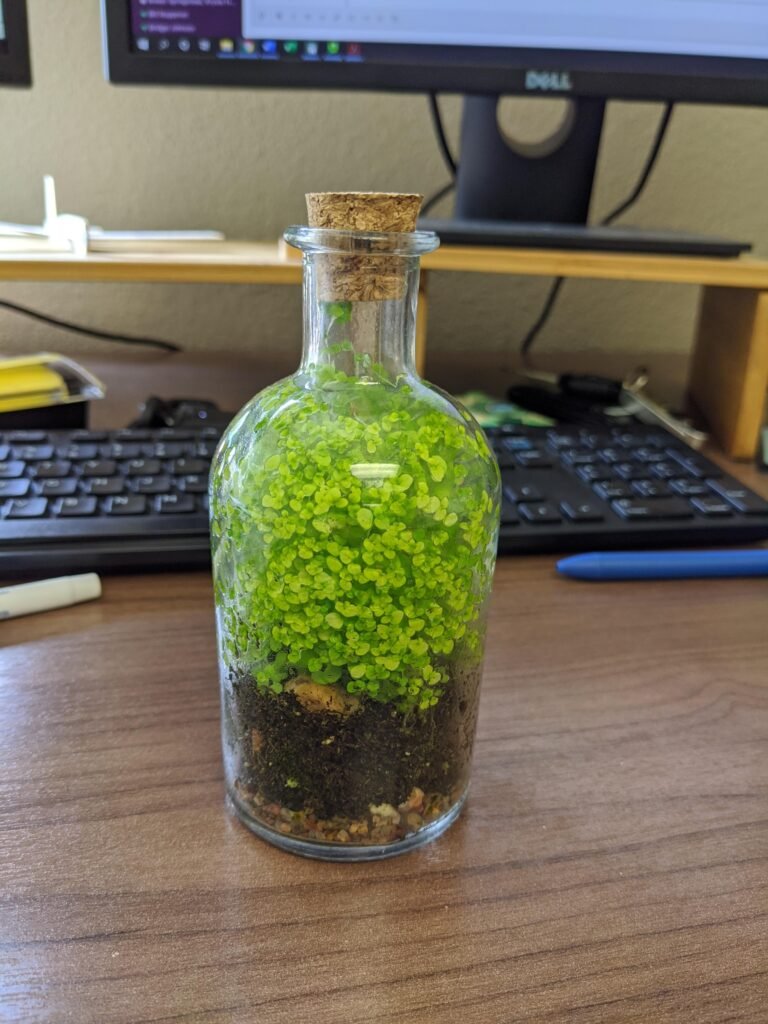
Baby Tears is one of those plants that just makes a terrarium feel lush. The tiny leaves spread out and create a dense, carpet-like ground cover that works wonderfully in the base layer. I’ve used it in a few woodland designs, and it always looks dreamy.
It loves humidity and indirect light, and it grows quickly. That means you might need to give it a trim now and then to keep it from overtaking everything else. But honestly, that just adds to the fun—watching your little ecosystem evolve.
If you want a plant that fills in space and adds softness, Baby Tears is a must-have. It also works beautifully when paired with moss or small-leafed ferns.
4. Moss (Sheet Moss, Cushion Moss, Mood Moss)
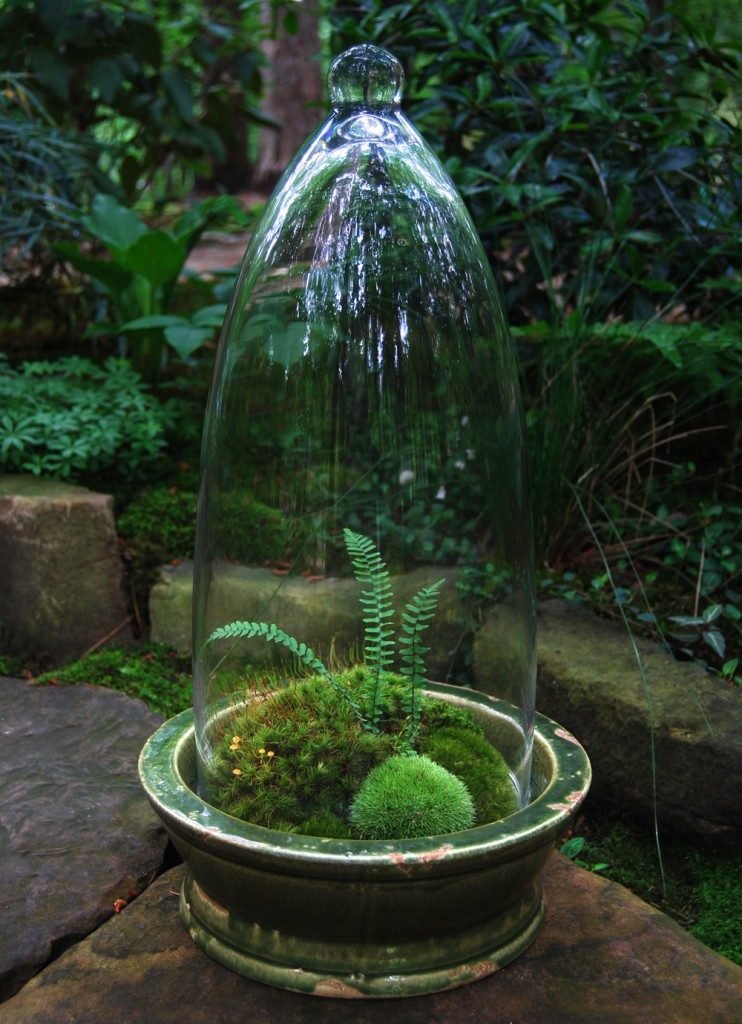
No closed terrarium feels complete without moss. It’s the foundation for almost every design I create, and it adds instant texture and softness. You can mix types, like flat Sheet Moss with rounded Cushion Moss, to create little hills and valleys.
Moss thrives in the humid, low-light environment of a closed container. I usually give mine a light misting every few days, and it stays green and vibrant without much effort. It also acts like a sponge, helping to regulate moisture in the whole terrarium.
Moss is the backbone of the fairy garden aesthetic—and for good reason. It’s incredibly photogenic and instantly makes your terrarium feel alive and magical.
5. Pilea (Pilea depressa or Pilea glauca)
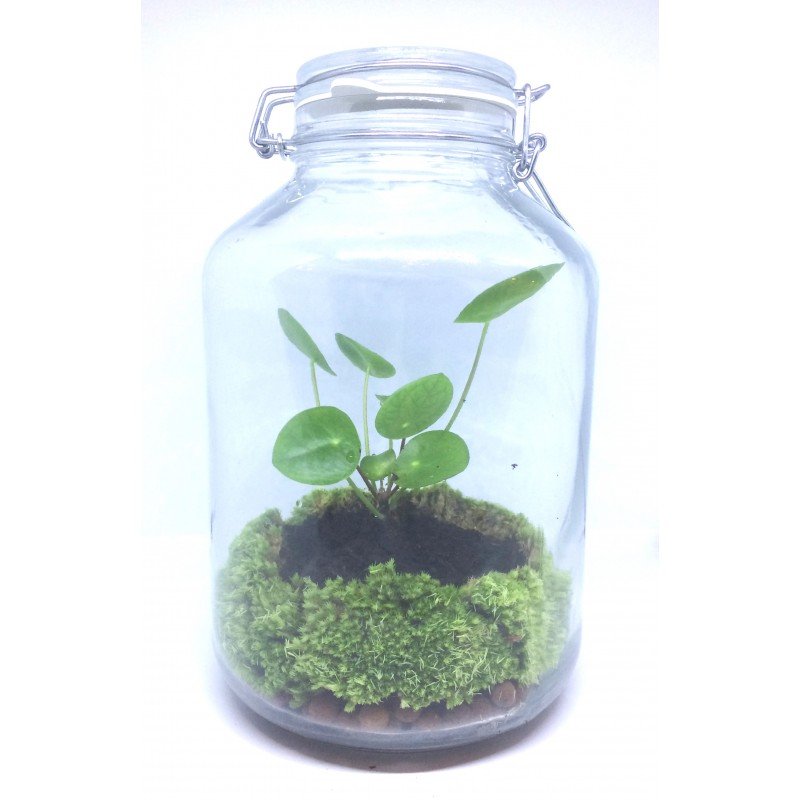
Pilea has become a bit of a social media darling, and it’s easy to see why. With its tiny round leaves and trailing habit, Pilea depressa adds texture and a cascading element to your terrarium. Pilea glauca, with its silver-blue tones, gives a more modern twist.
They do well in humid environments, and I love how easily they fill in space. Mine tends to drape over logs or rocks I place inside, which adds a layered, organic feel.
These are great if you want a bit of movement in your terrarium. And yes—they’re definitely trending online for those crisp, minimalist terrarium shots.
6. Peperomia (Especially caperata & prostrata)

Peperomia is one of those plants with a lot of variety, which makes it so fun for terrarium designs. The caperata type has deeply ridged leaves that look like they’re sculpted, while the prostrata, aka String of Turtles, trails gently and adds fine detail.
Both love humidity and do really well in enclosed spaces. I find they’re slow growers, so you won’t have to worry about them outgrowing their container quickly.
Peperomia is the plant to go for if you want texture, variety, and easy care. It’s all over online for good reason—it looks amazing in close-up shots.
7. Calathea (Mini Varieties)
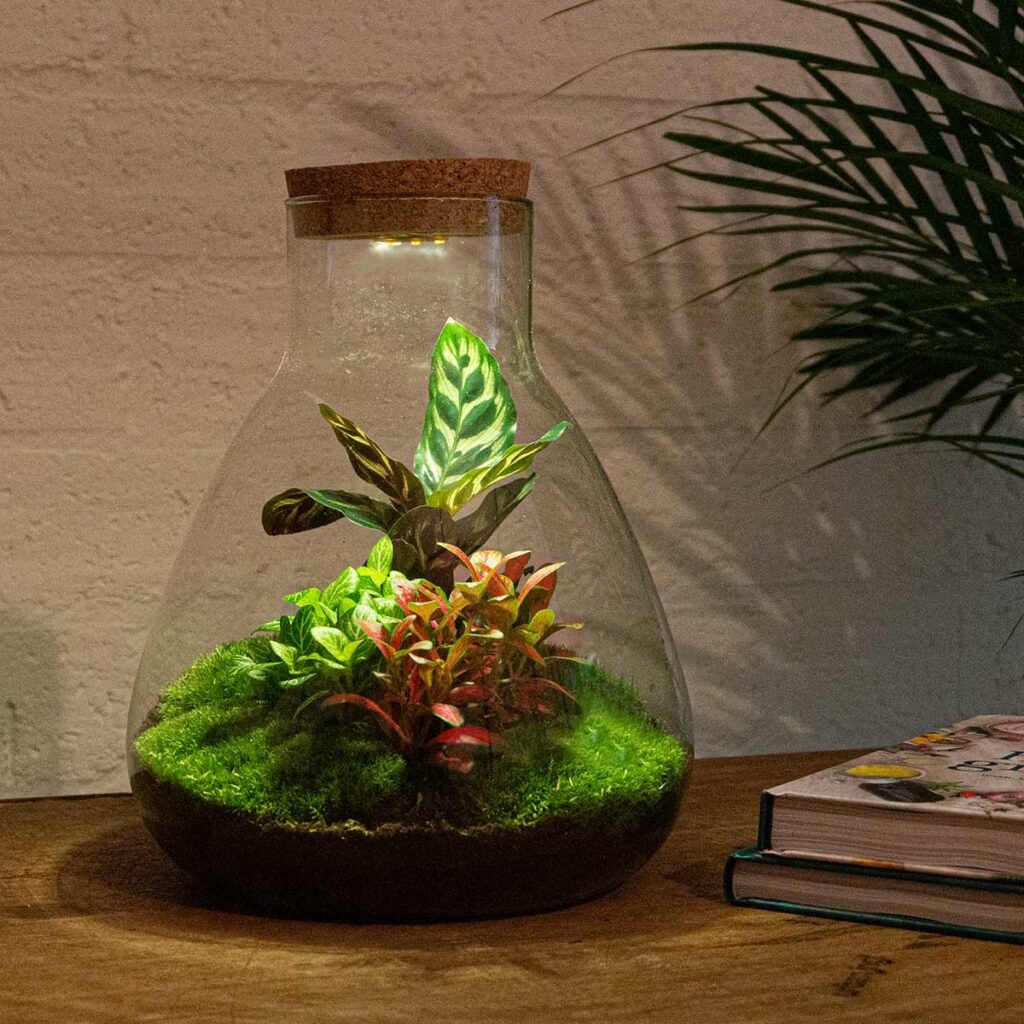
Calathea is like the diva of the terrarium world—bold, beautiful, and a little high maintenance. But with the right care, it absolutely steals the show. I go for mini varieties since full-sized Calatheas can get quite large.
Their patterned leaves come in greens, purples, and even pinks, depending on the variety. In the humid atmosphere of a closed terrarium, they tend to flourish. Just avoid direct sun and keep the soil slightly moist.
If you want to add a dramatic focal point to your setup, Calathea is your go-to. It’s a favorite on Pinterest terrarium boards for that reason alone.
8. Miniature Orchids (e.g., Masdevallia or Jewel Orchid)

If you’re feeling fancy, miniature orchids like the Masdevallia or Jewel Orchid are showstoppers in a closed terrarium. The blooms are delicate and colorful, while the leaves of Jewel Orchids have a velvety, iridescent look.
These orchids love the consistent humidity and warmth inside a closed container. I usually tuck them into a shaded corner and let them be—they don’t need much attention once settled.
Mini orchids add a sense of luxury and surprise. Every time someone sees them inside my terrarium, they do a double take. It’s no wonder they’re trending in more high-end botanical boards.
9. Selaginella (Spike Moss or Club Moss)
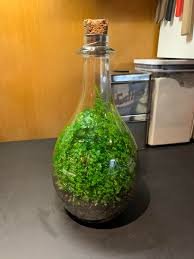
Selaginella is often mistaken for a fern or a moss, and honestly, it feels like a bit of both. It brings dense, soft foliage that adds body and color to your terrarium. I love using it to create a plush forest floor vibe.
It thrives in moisture and shaded conditions, and it spreads out nicely without getting too unruly. Plus, it’s a bit more forgiving than some ferns.
If you’re after a lush, storybook forest look, this is the plant to reach for. It adds softness and makes the whole design feel layered and complete.
10. African Violet (Mini Varieties)
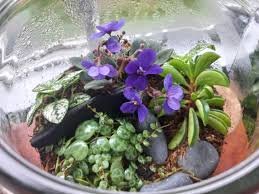
Mini African Violets are perfect for adding blooms to your closed terrarium. I was skeptical at first, but once I saw the deep purple flowers nestled among moss and ferns, I was hooked. It’s like having a mini garden that blooms year-round.
They need filtered light and slightly moist soil. I make sure the leaves don’t get wet to avoid spots and rot—watering from the bottom usually works best.
Pinterest is full of vintage-style terrariums with violets in apothecary jars and cloches. They’re a romantic addition that softens the whole look.
11. Creeping Fig (Ficus pumila)
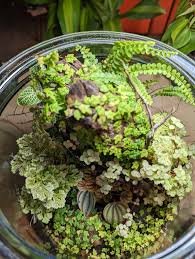
Creeping Fig is a fast grower and can add both height and movement to your closed terrarium. It has tiny heart-shaped leaves and vines that climb or trail, depending on how you arrange it.
I use it sparingly because it can take over, but it’s fantastic for creating that overgrown, secret-garden vibe. Just pinch it back if it starts crowding your other plants.
It’s ideal for taller containers or ones with vertical elements like driftwood. On Pinterest, it shows up often in layered terrariums with rich, textural contrast.
Tips for Building and Maintaining a Closed Terrarium
Start with a good base: a drainage layer of small pebbles or LECA, a sprinkle of activated charcoal to keep things fresh, and a moisture-retentive soil mix on top. This helps prevent root rot and keeps your terrarium healthy.
Water sparingly—a light misting is usually enough. Watch for condensation: a little fog is good, but if water is pooling at the bottom, it’s time to air it out for a bit.
Keep your terrarium in bright, indirect light. Direct sun can heat up the glass too much and stress your plants. Rotate it now and then for even growth.
Pinterest-Inspired Terrarium Design Themes
If you’re looking for design ideas, Pinterest is a goldmine. One of my favorite styles is the woodland fantasy, filled with moss, ferns, and tiny toadstools—it feels like something out of a fairy tale. Then there’s the tropical mini-jungle with orchids, Calathea, and pilea.
For something more modern, go minimalist with layered gravel, moss, and just one or two striking plants like a Peperomia or Fittonia. And if you’re into vintage vibes, try a romantic floral terrarium with violets, moss, and maybe a few decorative stones or crystals.
Each theme lets you express your personality, whether you want something moody, whimsical, or sleek.
Final Thoughts
Creating a closed terrarium is one of the most rewarding plant projects I’ve done. It’s low-maintenance, endlessly customizable, and honestly just really fun. Whether you want to build a lush jungle, a fairy-tale forest, or a simple green escape, these 11 plants are the perfect starting point.
Once you’ve built yours, share it on Pinterest or Instagram—you never know who you might inspire! And trust me, watching your little world grow behind glass is pure joy.

